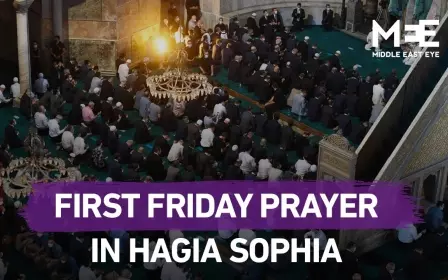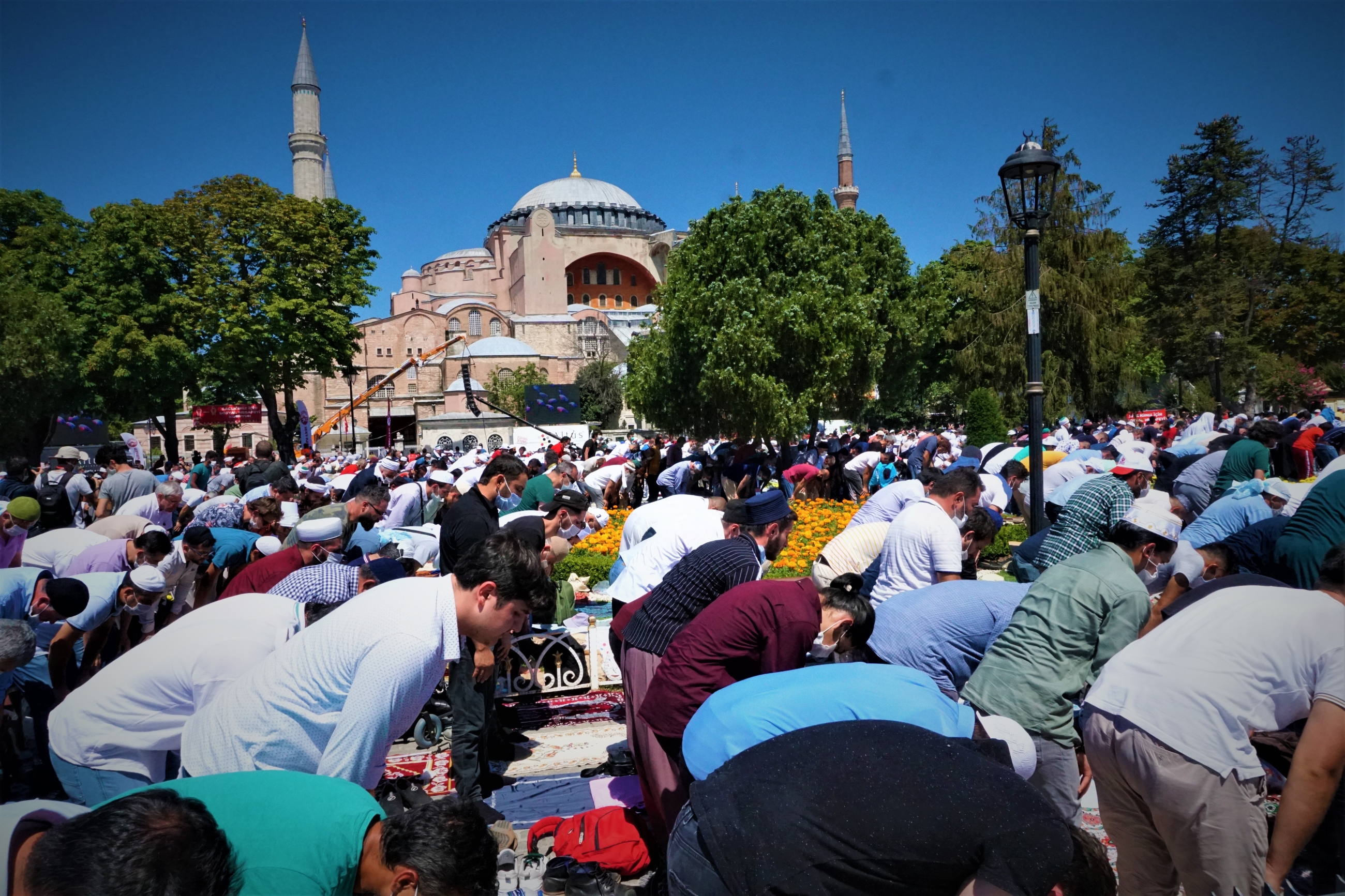
Hagia Sofia: Muslims flock to historic reopening as mosque
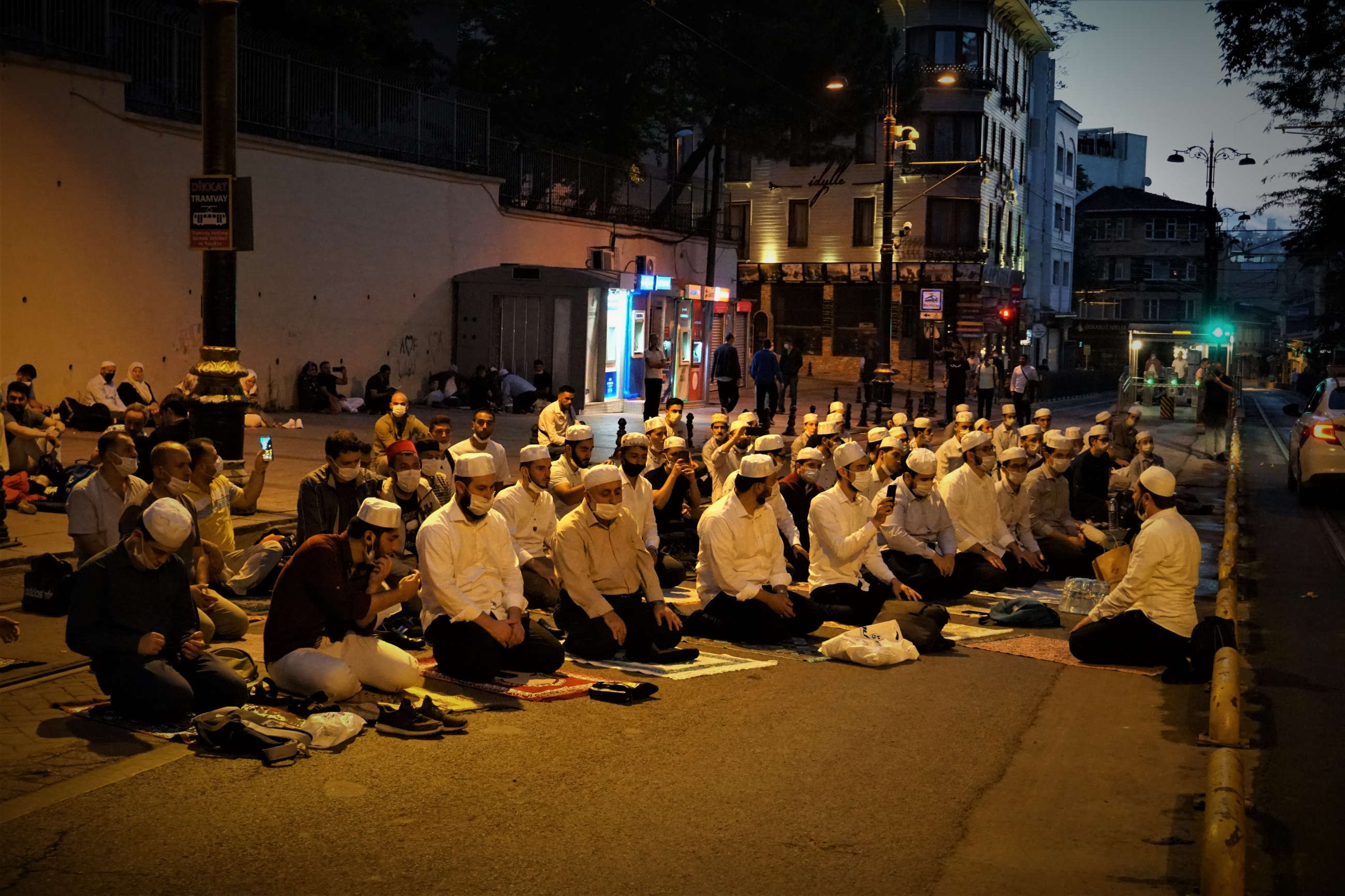
Starting on Thursday evening, tens of thousands of Muslim worshippers crossed Istanbul's Galata Bridge, wearing face masks and carrying their prayer rugs.
They were heading to the historic re-opening of Hagia Sofia as a mosque. Built in the sixth century, the cavernous building served as one of Christianity's most important cathedrals for nearly a millennium before being converted to a mosque after the Ottoman Turk conquest of Istanbul in 1453. It was then turned into a museum in 1934 by Turkey's secularist founder, Mustafa Kemal Ataturk.
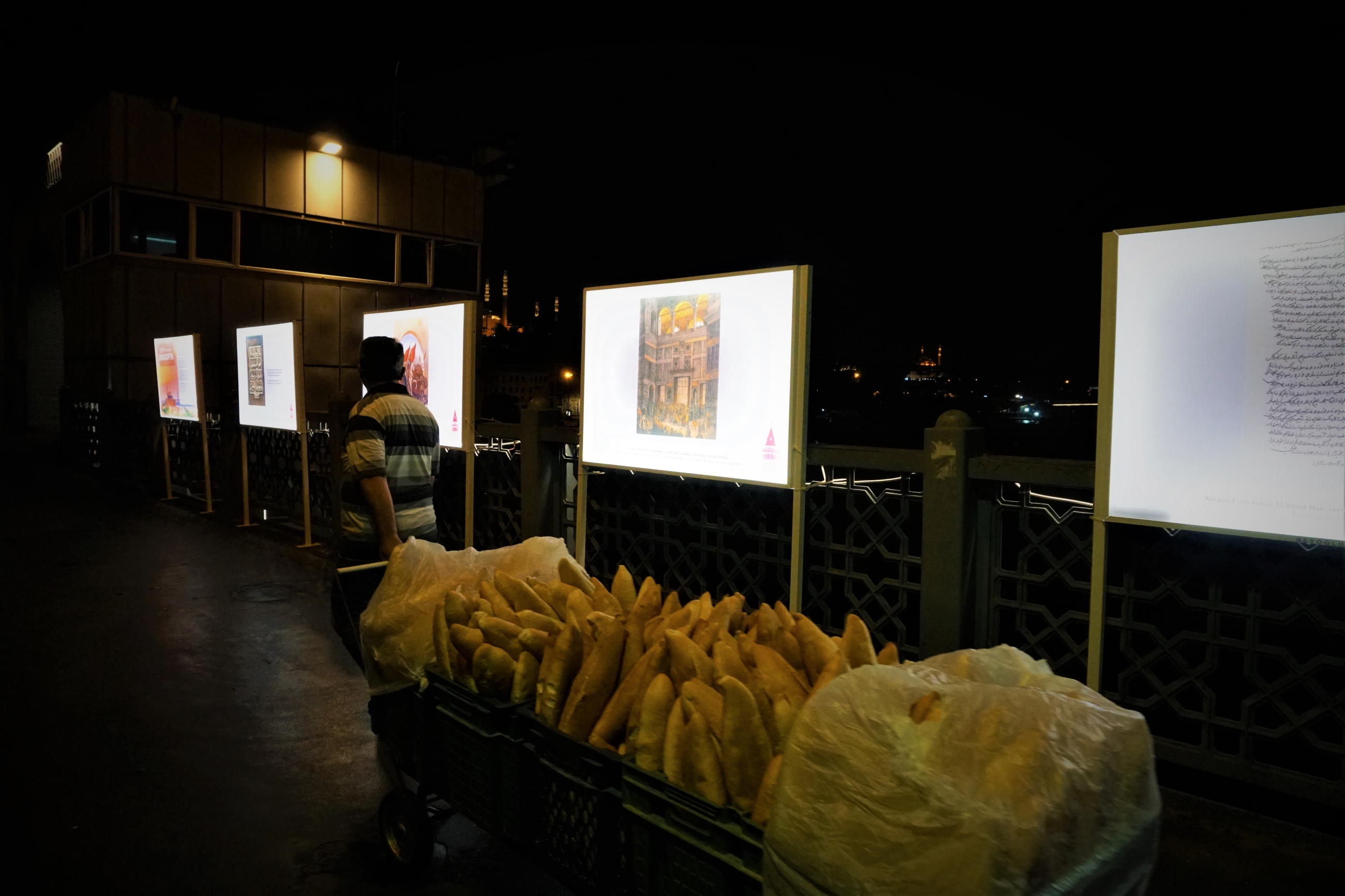
Early on Friday, the day of the opening, Ramazan Gunduz, a 45-year-old Istanbulite, walked past a public exhibition on the historic landmark on his way to deliver bread to restaurants nearby.
"This is such a great opportunity for Muslims to show the world how powerful we are," he said.
Not everyone shares his excitement. Church leaders and some western countries have sharply criticised Turkey's move, saying the shift to exclusive Muslim worship at Hagia Sophia risks deepening religious divisions.
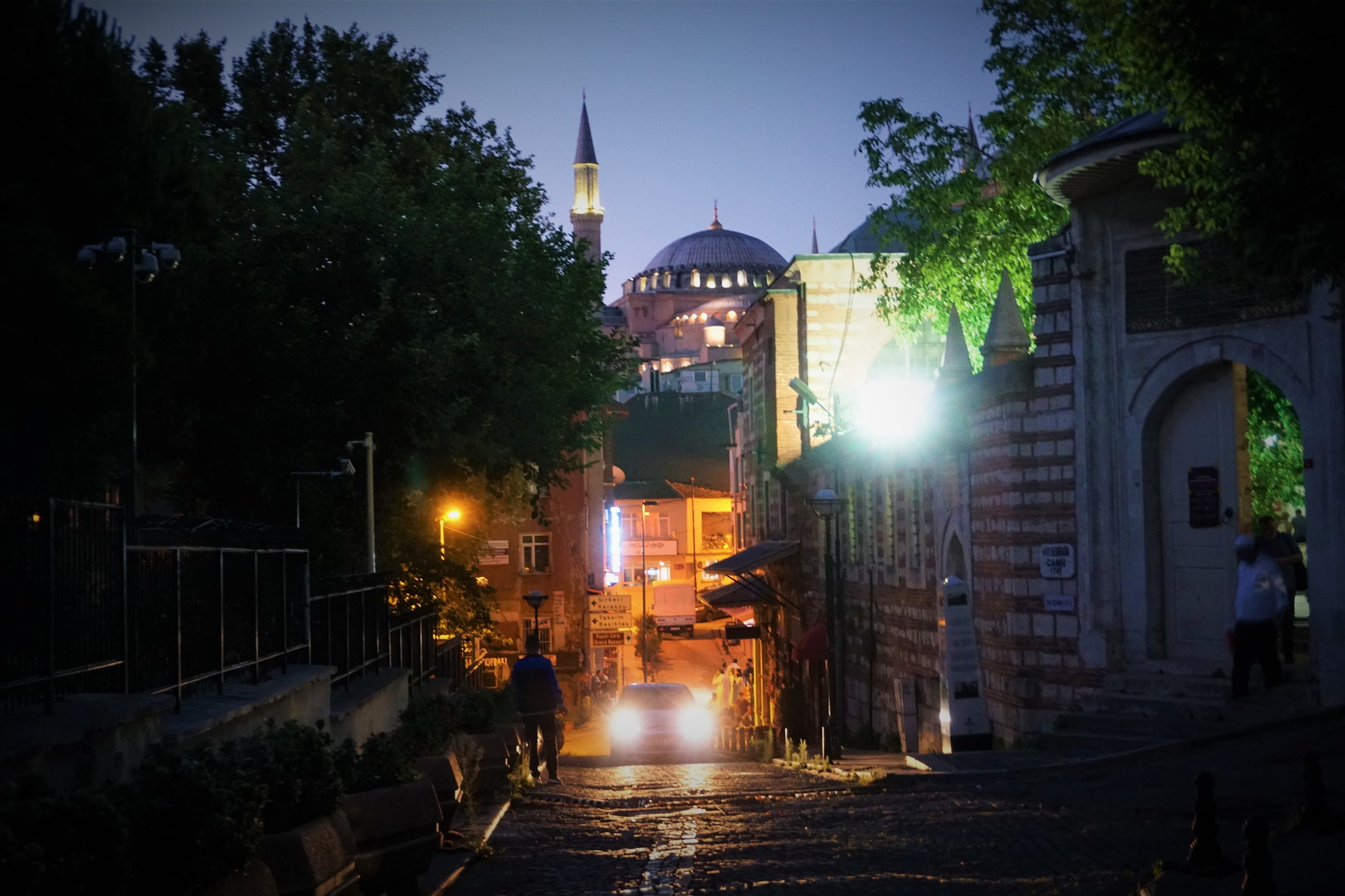
After 86 years, Hagia Sofia on Friday became an Islamic house of worship once again, as the throngs gathered for prayers and a grand opening ceremony attended by senior political figures including President Recep Tayyip Erdogan.
Chants of "Allahu Akbar!" (God is Great) were heard throughout the Golden Horn, the historic peninsula upon which the rededicated mosque stands.
Muhammed Gumus, who had travelled with his nephews from the western Aydin province to be there, said: "I cried like a baby when I heard the news," he said. "This is something else. This is a holy event."
Tens of thousands of people prayed in public squares and on pavements, squeezing into spaces between cars or in cafes, joining a ceremony that was attended by 350,000 people, according to Erdogan.
Many saw the opening as righting a historic mistake when the mosque was converted to a museum in 1934.
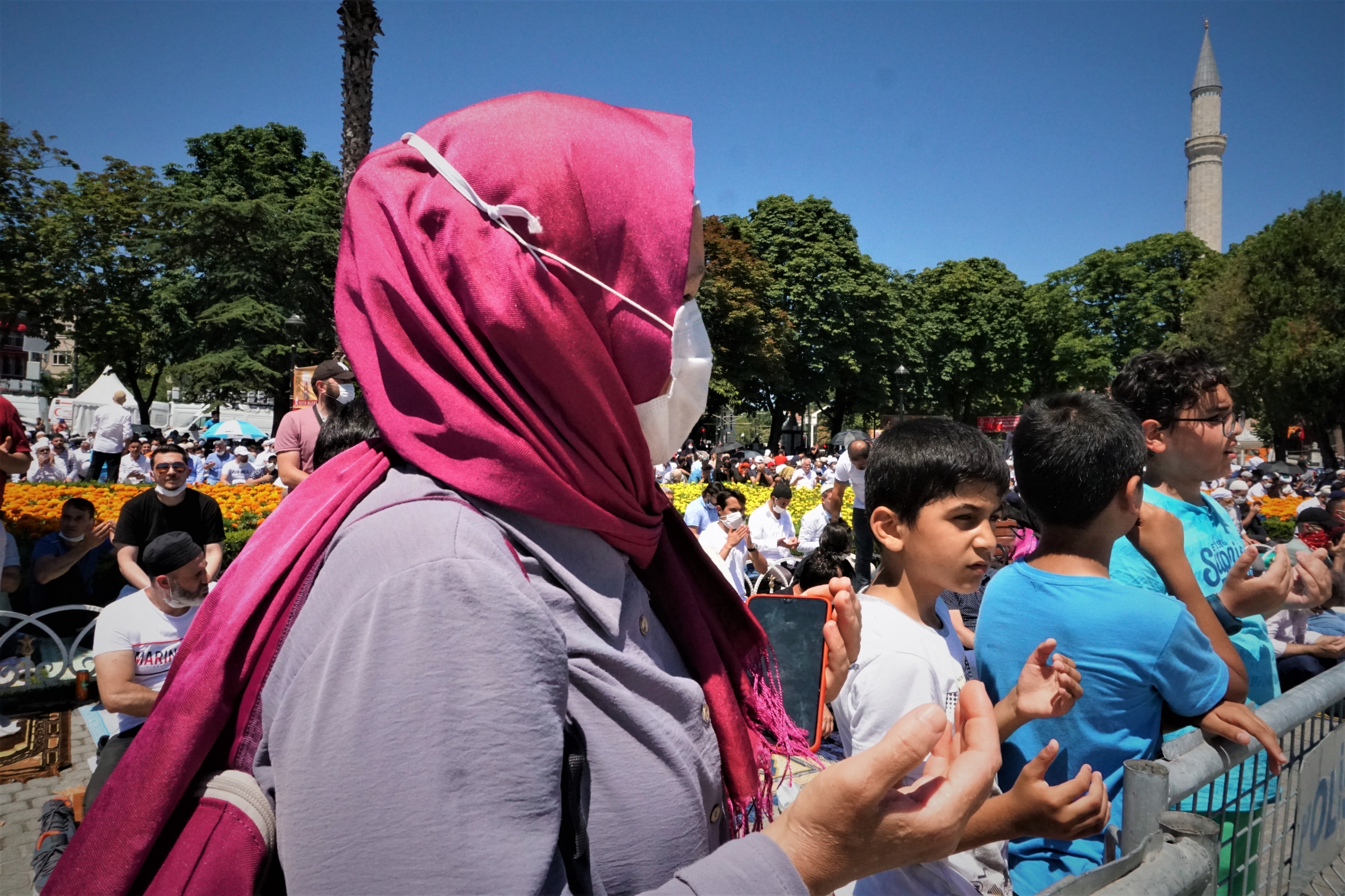
For Vefa Eminsoy, a 48-year-old housewife and mother of five from Fatih, an Istanbul neighbourhood named for Mehmet the Conqueror, who had taken the city in 1453, it felt like Islam had conquered the city for a second time. The "power is ours now," she said.

Inside the vast structure, Christian imagery including mosaics and frescoes were hidden under curtains while Erdogan recited verses from the Quran.
Four muezzins performed the call to prayer at 1:36pm from Hagia Sophia's four minarets.
The Erdogan administration also celebrated the date by printing special edition Hagia Sophia coins. But critics say this was a move to cover the crumbling economy and the unemployment rate.
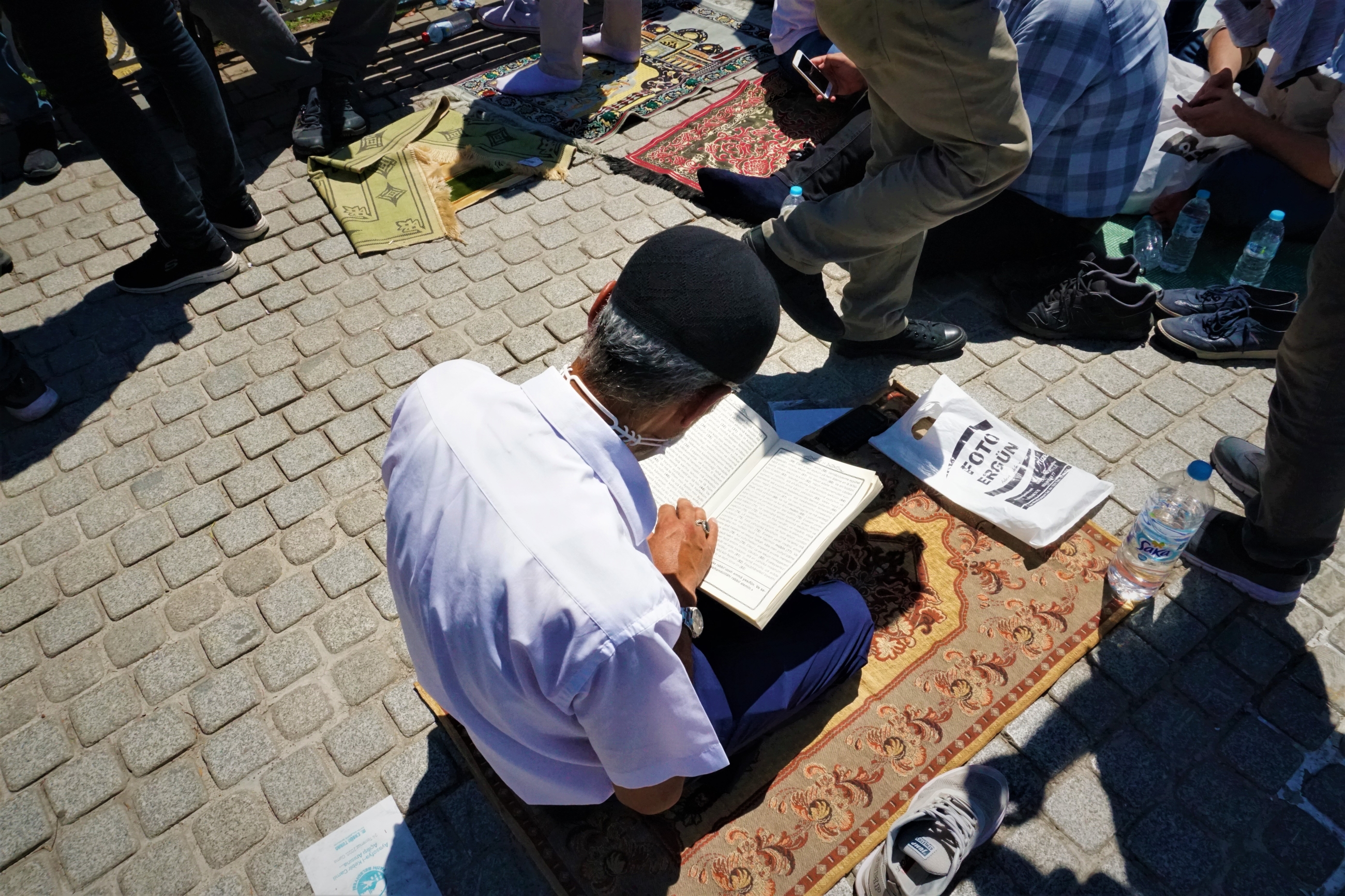
Outside, women and men were allocated separate praying spaces, with men taking up most of the Sultanahmet Square for the ceremony.
"Of course, I’ve been dreaming about this a long time," one of the few women in the square said.
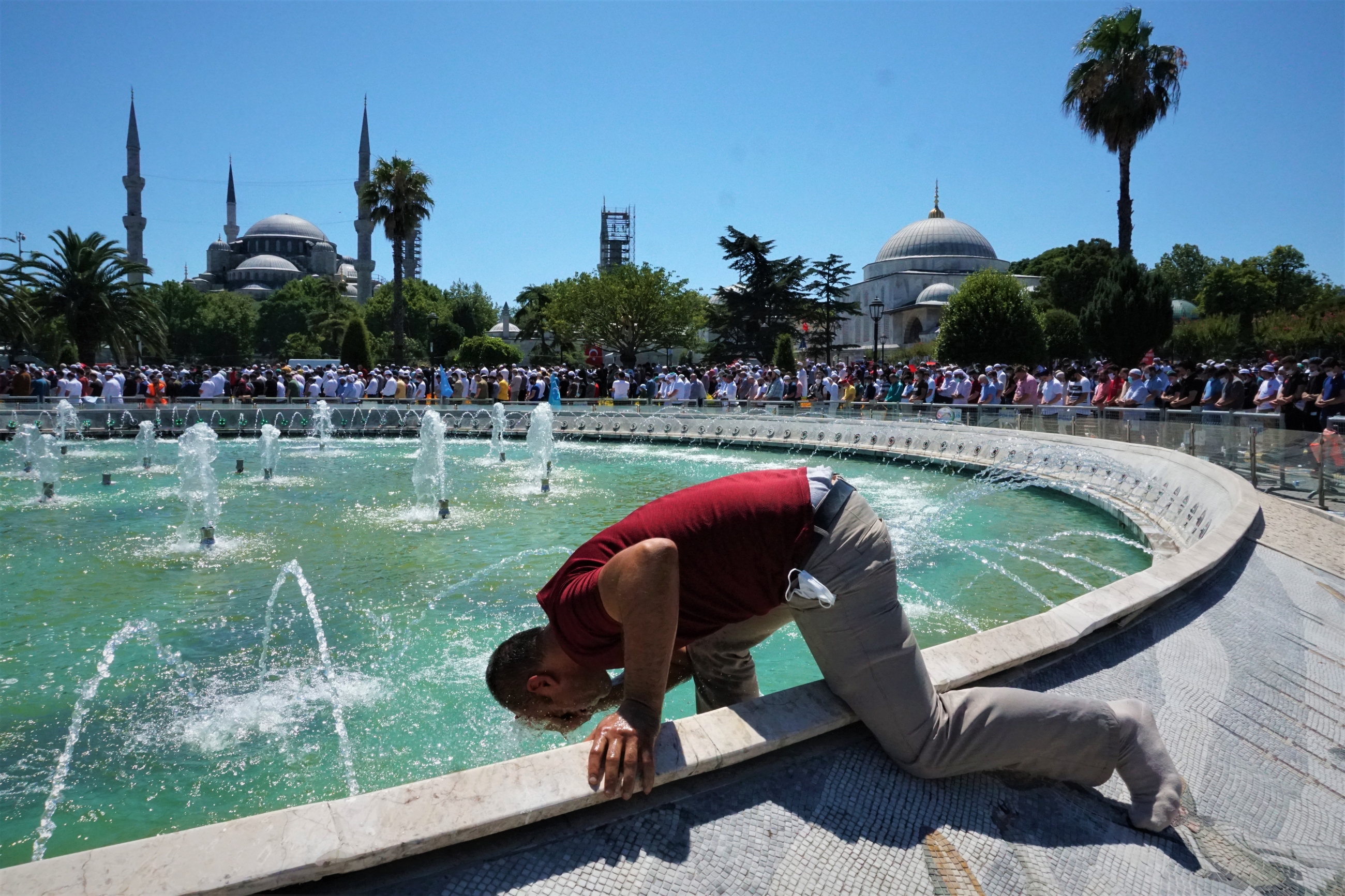
"It was very important to have fulfilled a decades-long longing for our nation," Erdogan told reporters after visiting Istanbul's Fatih Mosque with Devlet Bahceli, the leader of the ultranationalist MHP party.
The leader of the main opposition Republican People's Party (CHP), Kemal Kilicdaroglu, declined Erdogan's invitation to attend the public prayer ceremony, and Istanbul Mayor Ekrem Imamoglu was not present Friday.
Middle East Eye delivers independent and unrivalled coverage and analysis of the Middle East, North Africa and beyond. To learn more about republishing this content and the associated fees, please fill out this form. More about MEE can be found here.


